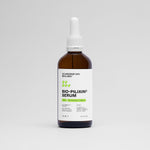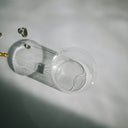Hair loss is a multifaceted issue that can stem from genetics, hormonal imbalances, stress, or nutritional deficiencies. Recently, vitamin D deficiency has gained attention as a potential contributor to hair thinning and shedding. If you’ve noticed more hair in your brush or on your pillow, you might wonder: Can a lack of vitamin D cause hair loss? The short answer is yes—research suggests that insufficient vitamin D levels can disrupt the hair growth cycle and lead to hair loss. In this article, we’ll dive into the science behind vitamin D and hair health, how deficiency contributes to hair loss, and actionable steps to restore your vitamin D levels and promote healthier hair.
Table of content
Can a Lack of Vitamin D Cause Hair Loss?
Yes, a lack of vitamin D can cause hair loss. Vitamin D plays a critical role in stimulating hair follicles and regulating the hair growth cycle. When vitamin D levels are low, hair follicles may enter a dormant phase prematurely, leading to thinning or shedding. Studies have linked vitamin D deficiency to conditions like alopecia areata and telogen effluvium, which are characterized by hair loss. Addressing this deficiency through supplements, diet, or sunlight exposure can help restore hair growth in many cases.
The Role of Vitamin D in Hair Health
Vitamin D is not just essential for bone health and immune function—it’s also vital for maintaining healthy hair. Here’s how it supports hair growth:
1. Activates Hair Follicles
Vitamin D receptors are present in hair follicles, and the vitamin helps activate these follicles to enter the growth phase (anagen). Without sufficient vitamin D, follicles may remain inactive, leading to slower hair growth or shedding.
2. Reduces Inflammation
Chronic inflammation can damage hair follicles and disrupt growth. Vitamin D has anti-inflammatory properties that protect the scalp and follicles from inflammatory damage.
3. Regulates Keratinocyte Function
Keratinocytes are cells that produce keratin, the protein that makes up hair strands. Vitamin D helps regulate these cells, ensuring strong, healthy hair formation.
4. Supports the Hair Growth Cycle
Vitamin D influences the transition between the growth (anagen), rest (telogen), and shedding (exogen) phases of the hair cycle. A deficiency can shorten the anagen phase and prolong the telogen phase, resulting in hair loss.
How Vitamin D Deficiency Leads to Hair Loss
When the body lacks vitamin D, several mechanisms can trigger hair loss:
1. Disruption of Follicle Cycling
Low vitamin D levels can push hair follicles into the telogen (resting) phase prematurely. This leads to a condition called telogen effluvium, where hair sheds excessively 2-3 months after the trigger.
2. Autoimmune Reactions
Vitamin D helps modulate the immune system. A deficiency may increase the risk of autoimmune conditions like alopecia areata, where the immune system attacks hair follicles, causing patchy hair loss.
3. Impaired Hair Shaft Structure
Inadequate vitamin D can weaken the hair shaft, leading to brittle, thin strands that break easily. Over time, this can create the appearance of overall hair thinning.
Signs of Vitamin D Deficiency Beyond Hair Loss
Hair loss is just one symptom of vitamin D deficiency. Other common signs include:
- Fatigue or muscle weakness
- Bone pain or frequent fractures
- Mood changes, such as depression
- Slow wound healing
- Frequent infections
If you’re experiencing hair loss alongside these symptoms, a vitamin D deficiency could be the culprit.
Diagnosing Vitamin D Deficiency
A simple blood test can measure your vitamin D levels. The two primary forms tested are:
- 25-hydroxyvitamin D [25(OH)D]: This is the main indicator of vitamin D status.
- 1,25-dihydroxyvitamin D: This active form is less commonly measured.
Interpreting Results
According to the National Institutes of Health (NIH):
- Deficient: Below 20 ng/mL
- Insufficient: 20–29 ng/mL
- Sufficient: 30–100 ng/mL
If your levels are low, your healthcare provider may recommend supplementation or dietary changes.
How to Treat Vitamin D Deficiency-Related Hair Loss
Restoring vitamin D levels can often reverse hair loss caused by deficiency. Here’s how to address it:
1. Vitamin D Supplements
Supplements are the most effective way to correct a deficiency. The recommended daily allowance (RDA) for adults is 600–800 IU, but higher doses may be prescribed for severe deficiencies. Always consult a doctor before starting supplements.
2. Sunlight Exposure
Your skin synthesizes vitamin D when exposed to UVB sunlight. Aim for 10–30 minutes of midday sun exposure several times a week, depending on your skin tone and location.
3. Vitamin D-Rich Foods
Incorporate these foods into your diet:
- Fatty fish (salmon, mackerel)
- Egg yolks
- Fortified dairy or plant-based milk
- Mushrooms exposed to UV light
4. Combine with Other Nutrients
Vitamin D works synergistically with nutrients like calcium, magnesium, and vitamin K2. Pairing it with these can enhance absorption and effectiveness.
How Long Does It Take to See Results?
Hair growth is a slow process, and patience is key. After addressing a vitamin D deficiency:
- 3–6 Months: Reduced shedding and noticeable regrowth.
- 6–12 Months: Significant improvement in hair thickness and density.
Consistency with supplementation, diet, and lifestyle changes is crucial for sustained results.
Other Nutrients That Support Hair Health
While vitamin D is important, other nutrients also play a role in preventing hair loss:
- Iron: Supports oxygen delivery to hair follicles. Biotin: Strengthens hair structure.
- Zinc: Aids in hair tissue repair and growth.
- Omega-3 Fatty Acids: Reduce scalp inflammation.
A balanced diet or multivitamin can help cover these nutritional bases.
Myths About Vitamin D and Hair Loss
Let’s debunk common misconceptions:
Myth 1: “Sunlight Alone Can Fix Deficiency”
While sunlight helps, factors like skin tone, geographic location, and sunscreen use can limit vitamin D synthesis. Supplements are often necessary.
Myth 2: “Topical Vitamin D Can Regrow Hair”
There’s limited evidence that topical vitamin D treatments (e.g., shampoos) effectively reverse hair loss. Oral supplementation is more reliable.
Myth 3: “All Hair Loss Is Due to Vitamin D”
Vitamin D deficiency is just one potential cause. Genetics, hormones, and other factors often play a larger role.
When to See a Doctor
Consult a healthcare provider if:
- Hair loss is sudden or severe.
- You have multiple symptoms of vitamin D deficiency.
- Over-the-counter treatments aren’t working.
A doctor can rule out underlying conditions like thyroid disorders or autoimmune diseases.
Preventing Future Deficiencies
To maintain healthy vitamin D levels and hair:
- Get regular blood tests to monitor levels.
- Take a daily supplement if you’re at risk (e.g., limited sun exposure, darker skin).
- Eat a nutrient-dense diet rich in vitamin D sources.
Conclusion
A lack of vitamin D can indeed cause hair loss by disrupting follicle activity and prolonging the resting phase of the hair cycle. Fortunately, this type of hair loss is often reversible with proper supplementation, dietary adjustments, and sunlight exposure. If you suspect a vitamin D deficiency is contributing to your hair thinning, consult a healthcare provider for testing and personalized advice. By addressing the deficiency and supporting overall hair health, you can restore your hair’s vitality and reduce shedding over time
Tired of Thinning Hair? Try a Clinically Tested Serum.
Looking for a natural way to regrow hair and achieve a thicker, fuller head of hair? Ditch the stinging nettle for hair loss – Bio-Pilixin Serum is a drug-free hair activation serum that delivers clinically tested results.
Here's why Bio-Pilixin is superior:
- Clinically Tested Results: 93% of users saw a reduction in hair loss, and 73% experienced increased hair density.
- Safe and Natural: Unlike harsh chemicals, Bio-Pilixin uses plant growth factors derived from stem cell technology to nourish hair follicles and stimulate growth.
- Fast-Acting: See visible results in as little as 45 days (most typically see results within 150 days).
Stop wasting time on unproven remedies. Bio-Pilixin is the safe, natural serum you've been searching for.
Read more:
- The 11 Best Dermatologists Recommended Shampoos To Buy In the UK (2025)
- 13 Best Shampoos For Volume To Buy in the UK (2025)
- The 7 Best Shampoo For Older Women To Buy in 2025
As your leading source for hair health information over the past 4 years, we never compromise on accuracy. When it comes to your health, you deserve information you can truly rely on - and earning your trust is our top priority.
Here's how Scandinavian Biolabs ensures every piece of content meets the highest standards of accuracy and integrity:
- Credentialed Experts: Our reviewers are actively practicing doctors and medical researchers
- Stringent Reviews: Content undergoes rigorous editing by subject specialists and review by a practicing doctor.
- Evidence-Based: We rely on well-established research from trusted scientific sources like peer-reviewed journals and health authorities.
- Full Transparency: Our editorial standards, writer credentials, reviewer credentials, correction process, and funding are all publicly documented.
- Independent Voice: While we do promote products, we operate in a vacuum to business operations. Our main goal is just an unwavering commitment to providing medically-sound guidance.
You can count on Scandinavian Biolabs to consistently deliver the trustworthy health information you deserve. Read our Editorial Standards.






